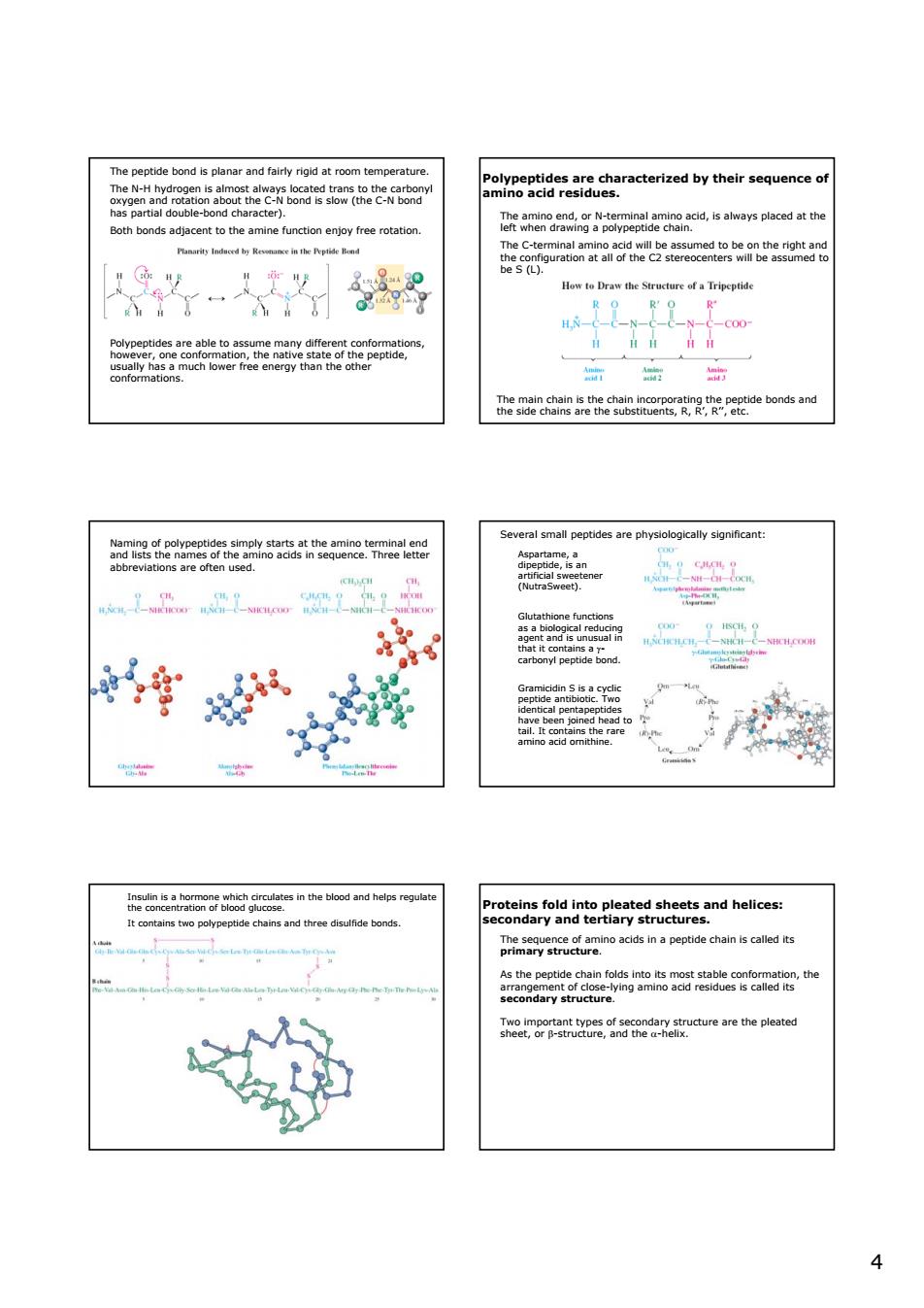正在加载图片...

The peptide bond is planar and The N-H hy BoiRegtaraiuharactetzedbyhersequenceol eaen2aadngao8peple2nahaacd,sawarplacedatt aaoeaeRe ee.heehaeaheeragRe,P2aeboniand Several small peptides are physiologically significant: n pep ad insulin is a hormone which circulates in the bloo herre the leated 44 The peptide bond is planar and fairly rigid at room temperature. The N-H hydrogen is almost always located trans to the carbonyl oxygen and rotation about the C-N bond is slow (the C-N bond has partial double-bond character). Both bonds adjacent to the amine function enjoy free rotation. Polypeptides are able to assume many different conformations, however, one conformation, the native state of the peptide, usually has a much lower free energy than the other conformations. Polypeptides are characterized by their sequence of amino acid residues. The amino end, or N-terminal amino acid, is always placed at the left when drawing a polypeptide chain. The C-terminal amino acid will be assumed to be on the right and the configuration at all of the C2 stereocenters will be assumed to be S (L). The main chain is the chain incorporating the peptide bonds and the side chains are the substituents, R, R’, R’’, etc. Naming of polypeptides simply starts at the amino terminal end and lists the names of the amino acids in sequence. Three letter abbreviations are often used. Several small peptides are physiologically significant: Aspartame, a dipeptide, is an artificial sweetener (NutraSweet). Glutathione functions as a biological reducing agent and is unusual in that it contains a γ- carbonyl peptide bond. Gramicidin S is a cyclic peptide antibiotic. Two identical pentapeptides have been joined head to tail. It contains the rare amino acid ornithine. Insulin is a hormone which circulates in the blood and helps regulate the concentration of blood glucose. It contains two polypeptide chains and three disulfide bonds. Proteins fold into pleated sheets and helices: secondary and tertiary structures. The sequence of amino acids in a peptide chain is called its primary structure. As the peptide chain folds into its most stable conformation, the arrangement of close-lying amino acid residues is called its secondary structure. Two important types of secondary structure are the pleated sheet, or β-structure, and the α-helix